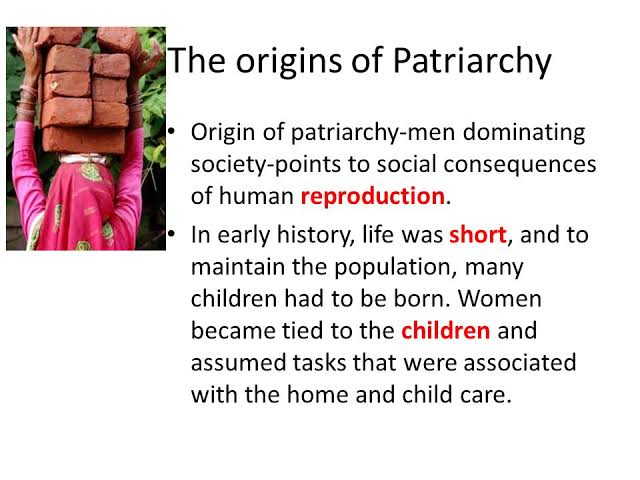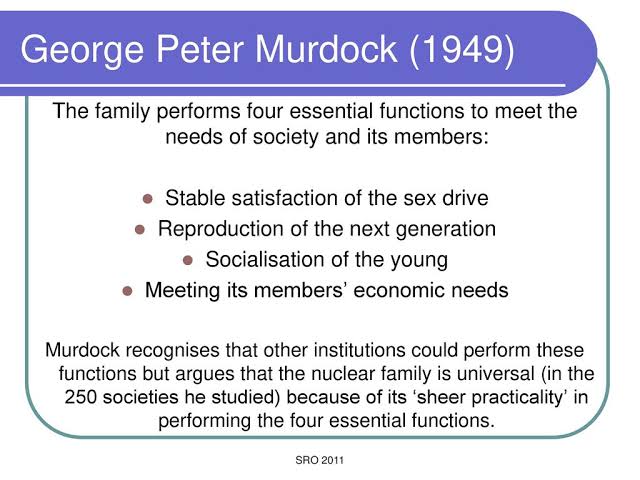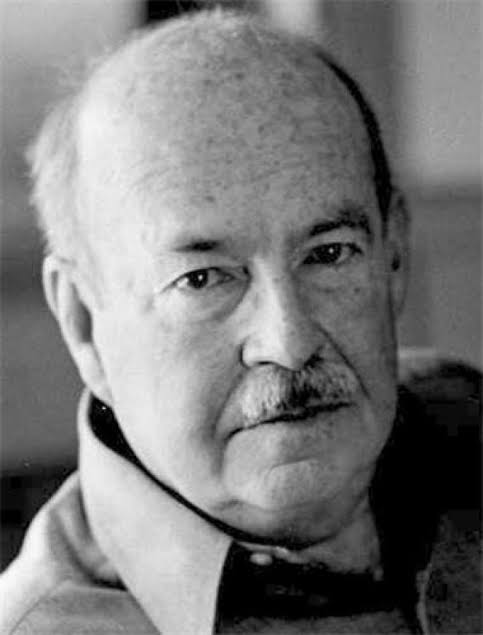Table of Contents
Patriarchy

Patriarchy, which means literally “rule by father,” is the term used to describe a society in which men are given greater power and are given a higher regard than women.In a system known as the “sexual division of labour,” the women of the household either carry out all domestic work themselves or delegate it to domestic servants on their behalf. Though it is frequently observed, gender division is a type of hierarchical social division that is rarely acknowledged in sociological studies. However, it is founded on societal expectations and preconceptions rather than biological principles.
Boys and girls are raised to believe that women’s primary responsibilities are caring for the home and raising children. The majority of households have a division of labour based on gender, with women handling all domestic tasks including cooking, cleaning, laundry, tailoring, child care, etc., while males handle all jobs outside the home. Men simply believe that women should handle certain chores, even if they are perfectly capable of doing them.Men are willing to take on these tasks when they are paid. Most hotel cooks and tailors are male.Women do work outside the home, thus the opposite is also true. Women work in the fields, gather fuel, and get water in villages. While middle class women work in offices, underprivileged women in metropolitan areas labour as domestic helpers in middle class houses. In reality, most women perform a paid job in addition to their home duties. However, their efforts go unappreciated and are not acknowledged.
While gender refers to qualities shaped during the course of social relations, sex refers to the fixed and unchangeable biological attributes shared by people in all nations and cultures. The expectations placed on each sexe in terms of their respective duties transcend the physiological and biological differences between the sexes, despite the fact that gender emerges from objective biological divergences. Gender disparities are social conceptions that have been ingrained based on how a given society perceives physical distinctions as well as the presumptive preferences, proclivities, and talents of men and women. Contrary to the unchanging traits of sex, gender variations are commonly acknowledged in historical and comparative social assessments to be variants that change through time and from one culture to another as societies develop and change.
Accordingly, gender relations are defined as the particular methods through which many cultures establish the roles and obligations of each sex. They also control access to more transient resources like power and more tangible resources like land, credit, and training. Numerous aspects of daily life are affected, such as the family’s roles both inside and outside the house, possibilities for professional progress, education, and participation in policymaking.
It is discovered that division of labour is a universal phenomena that occurs in both ancient and modern societies. In the past, it was heavily based on sex and age; in the present, it is based on talents.A sexual division of labour will be used if division of labour is thought of as a biological concept. The division of labour is then determined by social and cultural factors and is dependent on gender. It has been established that almost all societies are patriarchal, or male-dominated. This means that men play a significant role in all types of decision-making, and it is therefore inevitable that men will be given certain roles as the division of labour is created. Patrarchy had been extremely important. However, thinkers who can be seen in the following ways supply the perspectives for both of them:
Theoretical Perspective:
The major contributors to the theory of sexual division of labour are:
- Tiger and Fox
- Murdock, G.P.
- Parsons, T.
- Mr. Bowlby
According to Tiger and Fox,
Human behaviour is founded on human biology.Tiger and Fox contend that men are more violent and domineering than women because of the biogrammar, a genetically based programme that predisposes people to behave in specific ways. Their traits are genetically based, and in particular, they are caused by the genetic differences between men and women. Their genetic adoption to a way of life and intrinsic genetic distinctions in men’s primate ancestors both contribute to these variances.And in that sense, male dominance is a trait that is tied to sex. They discovered these experiences after studying hunting societies. They contend that men and women in hunting societies adapted to a sexual division of labour in various ways. Genetic change is slower than cultural change, therefore there is still evidence of the male and female biogramma of a hunting civilization. As a result, the division of labour is based on gender.
G.P. Murdock:

He believes that the biological disparities between men and women provide the foundation of the social system of sexual work. He asserts that males can perform physically demanding tasks like mining, clearing land, and building houses better due to their superior physical strength. He can engage in activities such as hunting, fishing, and protesting without being hindered, as are women, by the physiological demands of pregnancy and breastfeeding, whereas women can engage in activities such as gathering food, cooking, washing, making clothes, etc. Murdock studied 250 societies, spanning from prehistoric hunting and gathering groups to contemporary nation states, and discovered that the sexual division of labour existed in every one of his sampled societies.
T. Parsons:

In an isolated nuclear family, Parsons has identified two crucial roles:
- children’s early socialisation
- Developing a stable adult personality
Effective socialisation requires a close-knit, encouraging community. Women play an expressive role in the family, according to Parsons.It implies that woman also gives her husband emotional support, warmth, and safety.Men play an important position in society, which can cause stress and anxiety. The expressive female helps the man relax by showing him love, consideration, and understanding.Parsons contends that a distinct division of labour is necessary for the family to function as a social structure effectively.
John Bowlby:

Parsons has offered the justification. He asserts that the infant and young child must have a warm, close, and ongoing bond with his mother in order to be in good mental health.According to Bowlby’s argument, a tight, personal mother-child attachment is psychologically necessary and has hereditary roots. It implies that the division of labour is based on gender.
Ann Oakley:

“The division of labour on the basis of sex is not universal, and there is no reason why it should be,” says Oakley. Human cultures are varied and utterly unpredictable. Rather than being the product of unstoppable biological processes, they are the result of human ingenuity.Since human cultures are evolving, entire lives are also changing, which leads to changes in the social structure of employment.Due to its sex reliance, the division of labour is thought to be a fixed phenomena, therefore despite cultural changes, it shouldn’t be subject to change. However, this transition is occurring. It demonstrates that there is no sex-based labour divide.
She criticises Murdock’s analysis and claims that it is skewed because he viewed different cultures through both masculine and western lenses. She also criticises Parsons’ position, arguing that the expressive housewife/mother role is not essential to the well-being of the family. It just exists for men’s convenience.She comes to the conclusion that gender roles are not biologically set but rather influenced by culture.
No biological characteristics prevent women from working in a certain field. Motherhood is a societal construct;……. Children do not need a tight, ongoing interaction with a female or mother figure, according to research from numerous societies.According to SHERRY B. ORTNER, women’s standing in society is not determined by biology per se, but rather by a general devaluation of women. But how each culture defines and rates the biology of women and girls varies. The basis for female subordination would thus be eliminated if this general assessment changed.
ORTNER
ORTNER contends that women, as generally understood, are cut off from nature because of their physiology, which is more focused on the natural process of species reproduction. They are therefore worried about early socialisation and child care.In contrast, men have a larger range of contacts and fewer personal and particular relationships through involvement in politics, wars, and religion, whereas women build more personal and close relationships with others, especially their children. Men are therefore perceived as being less emotional and more objective. In this sense, it may be claimed that the subjugation of women has less to do with their biological makeup as a whole and more to do with how their biological makeup is valued in society.
Sally Walby
Numerous feminist interpretations of gender inequality and the sexual division of labour have placed a strong emphasis on the idea of patriarchy. According to Sylvia Walby, every investigation of gender inequality must take the idea of patriarchy into consideration. In Theorising Patriarchy (1990), Walby offers a patriarchal theory that is more adaptable than earlier theories. It allows for historical change and takes into account racial and socioeconomic inequalities.
According to Walby, the patriarchy is a set of social norms and structures in which men rule over, subjugate, and profit from women. She views capitalism and patriarchy as separate systems that interact in various ways, sometimes peacefully and other times in conflict, depending on historical circumstances. She contends that the sexual division of labour fostered by patriarchy has typically been advantageous for capitalism. However, there have been instances in which capitalism and patriarchy have clashed. For instance, when there is a war and a large influx of women into the workforce, capitalism and patriarchy’s interests are not aligned.
Walby lists six systems that patriarchy functions through.She admits that one flaw in early feminist philosophy was its propensity to isolate one ‘fundamental’ factor contributing to women’s oppression, such as male aggression or women’s place in reproduction. Walby believes that patriarchy is made up of six structures that are separate yet interact with one another because she is concerned about the extent and interconnectivity of gender inequality.
1. Production relations in the home: A woman’s husband (or cohabitant) expropriates her unpaid domestic labours, such as housework and child care.
2. Paid employment: Women in the workforce are underrepresented in particular occupations, paid less, and assigned to lower-skilled positions.
3. The patriarchal state: The state consistently favours patriarchal interests in its goals and policies.
4. Male aggression is planned and organised, despite the fact that it is frequently perceived as consisting of individuals acts. This violence is frequently experienced by women, and it has typical effects on them. When the state refuses to get involved, save in rare circumstances, it effectively supports the violence.
5. Patriarchal relations in sexuality: ‘Compulsory heterosexuality’ and the sexual double standard between men and women (where distinct ‘rules’ for sexual behaviour apply) are examples of patriarchal relations in sexuality.
6. Patriarchal cultural institutions: Institutions and practises that promote a patriarchal gaze, such as those in the media, religion, and education, produce patriarchal portrayals of women. Women’s identities are influenced by these images, which also set expectations for proper conduct.
Walby differentiates two different patriarchal structures:
Private patriarchy
Private patriarchy is the control over women exercised by a single patriarch within the family. As a result, women are basically barred from participating in public life, making it an exclusionary approach.
Public patriarchy
On the other side, public patriarchy takes a more collaborative form. Women participate in public spheres like politics and the workforce, yet they are still excluded from positions of power, wealth, and status.
Based on his research in Britain, Walby claims that patriarchy has changed from the Victorian era to the present, at least in Britain, both in terms of degree and form. She points out that while the income gap is closing and women are doing better in school, these developments only show a change in the degree of patriarchy. If women’s oppression was once concentrated primarily in the home, it is now pervasive throughout society as a whole since women are now marginalised and subservient in all spheres of public life. In other words, patriarchy has changed from being a private to a public institution. Liberated from the family, women now have the entire society at their disposal to be exploited, to paraphrase Walby.
Women’s current condition is primarily a result of patriarchal social structures. The majority of a woman’s time is spent caring for her home and raising her children. The majority of women do not get the chance to grow personally. They are led to feel that their home is the proper place for them to engage in activities and that they are not required to be involved in public life. Girls are instilled with the habit of prioritising interpersonal relationships over individual success from an early age. Girls are trained to be obedient, shy, and submissive, whereas boys are socialised to be dominant, forceful, and film. Boys are encouraged to work as secretaries or nurses. Women are not able to pursue a career in politics because to the experience they have obtained in their own professional lives.
When Mary Wollstonecraft (1759–1797), a woman had no legal right to possess property, was excluded from many jobs, and was thought unsuited for education when she published her essay “Vindication of the Rights of Woman.” Even though her spouse believed women should have the same rights as men, she had no practical right to divorce him. She maintained that because women and men are rational beings, they ought to have equal rights. She developed the tenets on which later movements for women’s rights to voting, work, and property were constructed.
In the Subjection of Women, John Stuart Mill (1806-73) argued for complete legal and political rights for women, arguing that they were not in any way less talented than men.
The chance to demonstrate their abilities has been provided to women in the modern world by the continued growth of technology, the diversity of business, industry, administration, the arts, and professions, among other factors, as well as the growing demand for new skills, talents, and professional competence. Additionally, they have been urged to pursue respectable occupations and pursue higher education and training. Women are now recognised as being capable of performing the majority of male-dominated occupations for which they were formerly deemed unfit. Women’s equal rights are no longer controversial in progressive circles.
The basis for the sexual division of employment is cultural value.Then, gender ideas of male supremacy and a high level of sexual hostility between men and women encourage it.A “chauvinistic” ideology with roots in men’s traditional military roles is described by Meigs (1990). The division of labour in the mundurucu civilization of the Amazon, where men hunt, fish, and clear forests for gardens while women grow, harvest, and prepare manioc. The value ascribed to men’s efforts at Mundurucu is higher.
Male dominion is typically symbolic, according to Murphy and Murphy (1985), who note that “Male ascendancy does not wholly derive from masculine activities but is to a considerable degree prior to them.”
According to Martin and Voortries (1975), when root crops are replaced by cereal crops and when animal labour takes the place of physical effort, the household workload of women tends to grow.
The division of labour that occurs in many egalitarian communities today is marked by males hunting and women gathering.
According to Goodye (1971), Tiwi culture places a strong emphasis on the equality of men and women in society. In comparison to the Tiwi of Australia, Agta Negrito women in north-eastern Luson, the Philippines, have better social and economic equality with their male counterparts. They significantly contribute to the daily food supply and are in charge of how the food is distributed, giving it to their families and exchanging it with others in the neighbourhood. This refutes the commonly held belief that childbirth and pregnancy are incompatible with hunting in foraging communities. They have created contraceptive and abortion techniques to help them space out their kids.
Women have benefited from landlordism’s elimination and the dissolution of its sociocultural milieus.
Female income, according to Mencher and Saradamoni, is crucial for homes that are below the poverty line. The majority of women work in one of three categories: (a) home work plus activities like alone; (b) membership in the officially defined labour force. Even these women suffer discrimination due to their sexual orientation and low socioeconomic status.
In her research, Karuna Ahmad identifies five tendencies in women’s employment: (a) a concentration of women in a small number of professions; (b) a concentration of women who earn less than males; and (d) a high percentage of unemployed women with advanced degrees and professional experience. According to studies, women’s professional positions reflect their status in society, including their educational accomplishments, caste and class backgrounds, and social status. Modern education has a greater influence on how women see their status than do traditional views of marriage and family.
Marxist analysis of women was preferred by Agnithotri and Aggarwal. According to Aggarwal, the organisation of production and the relations of production will obscure a number of issues that would have an impact on gender relations. However, despite the metaphor of reforms and the individuation of women, patriarchy, the division of labour, and the sacredness of marriage have endured.
Women play significant roles in production in horticultural societies where gardening and farming are necessary due to the use of hand-tool technologies. Lepowsky cites gender equality among the matrilineal and horticultural inhabitants of the Pacific island of Vanatani. According to him, women hold a key position in Vanatinai exchange and other activities.
















